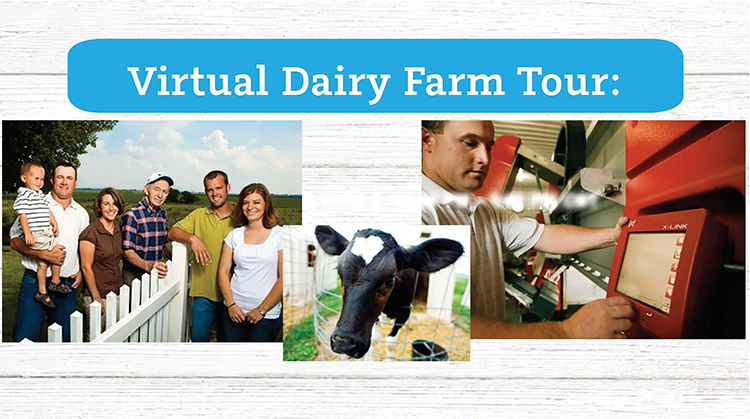
There is a consistent message that dairy producers have been hearing — Connect with your consumers. They want to know the people who produce their food.
There are farms that have a Facebook page. They share dairy messages with followers and answer questions about agriculture. They invest time with consumers, sharing their perspectives, and should be commended for that dedication.
A new idea that Midwest Dairy debuted this summer was a Virtual Dairy Farm Tour, which included a live walk around of a dairy farm. The target audience was dietitians. The owner of the dairy talked about his farm, and the camera followed him from the fields, to the barns, to the milking robots. Attendees asked questions in real time. The dairyman could then explain the answer and use any props to better detail his explanation — like grabbing a handful of feed and pointing at ingredients or directing the camera to the robotic milking unit for a close-up of the process.
There are some advantages to these live broadcasts. This format gives viewers a chance to “meet the dairy producer” and get a genuine feeling for the compassion he or she has for their animals and the dedication they have to their land, their animals, and their families.
The dairyman also does not have dozens or hundreds of people walking around the farm, which can be a biosecurity issue. He or she can direct the tour to areas of focus, such as calf care or milking facilities. We all know that visitors can get distracted with a barn cat or the farm dog and miss the key messages that we try to share during a tour. In this format, there are not those distractions.
For those who never make it to a real farm, they can finally see the scope and dynamics of an operation. Some may only think of a farm as the wooden barn, a pile of straw, two bales of hay, and a pony in a stall that they saw on a television show.
Viewers can also ask questions in real time, rather than wondering — or worse, making up their own answers — as to why something was done when it is a taped delivery.
A downside to this format is that the presentation is live — there is no editing. That means what comes out of your mouth is what they hear. So, the presenter needs to be very concise and direct with answers. You do not want to give a long, jargon-filled response that confuses the viewer.
Live presentations also take some extra hands. The speaker and the person doing the recording are the very minimum, but having an extra person opening doors so the speaker’s back is not to the camera or demonstrating farm activities while the presenter talks can help things run smoother. This also allows the speaker to maintain eye contact with the camera.
The unknown factor is the internet connection. Rural areas, where most farms are located, are notorious for poor service. Be sure to test the location. If not, the result could be a presentation that drops visuals and sound– which not only is irritating, but the message is also lost.
Not all methods to share the story of dairy fit all people. The live farm tour is one that I see appealing to those who like the camera and want to showcase their farm and the dairy industry as a whole. For those who like the in-person relationship, I hope you continue to spread your message. And for the social media savvy, continue to highlight all that dairy brings to the table and the communities it serves.

The author is the online media manager and is responsible for the website, webinars, and social media. A graduate of Modesto Junior College and Fresno State, she was raised on a California dairy and frequently blogs on youth programs and consumer issues.








